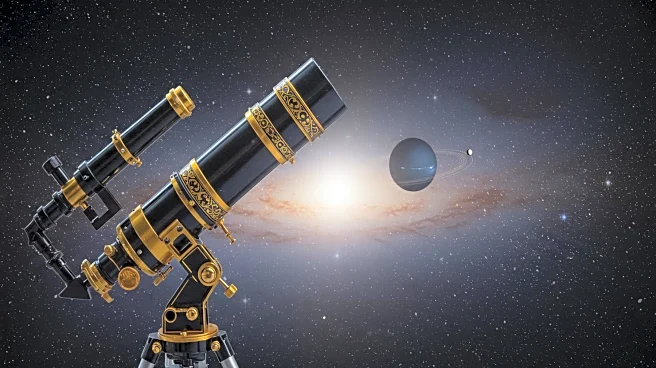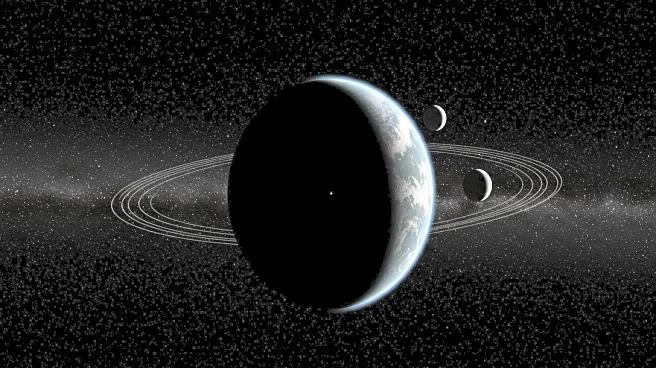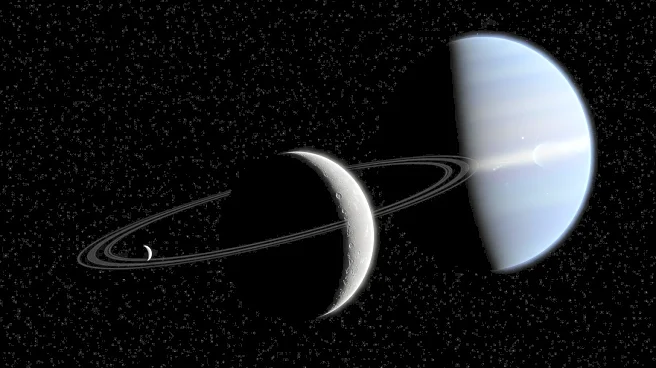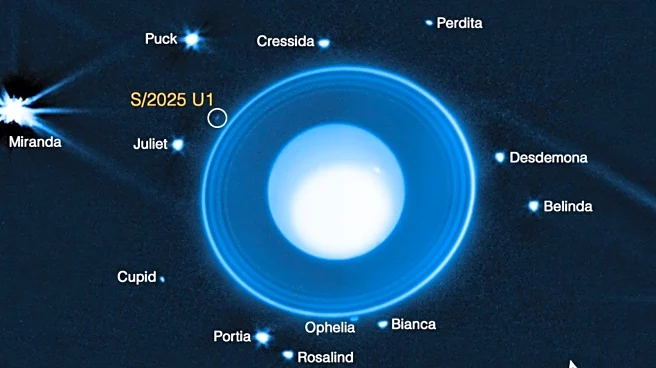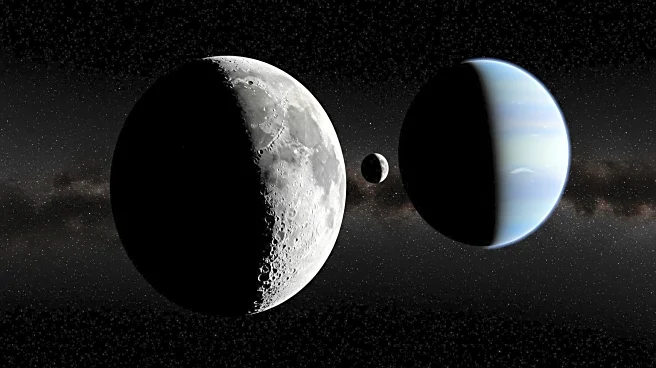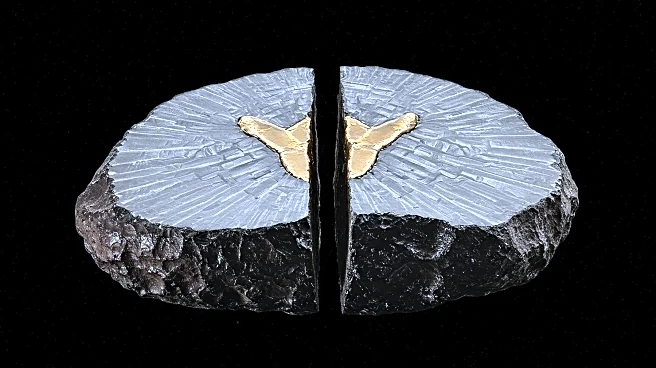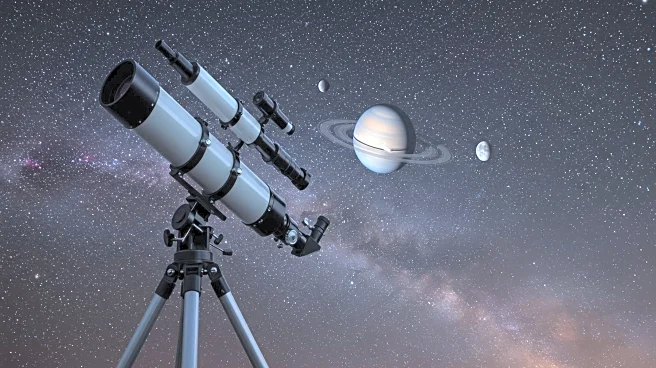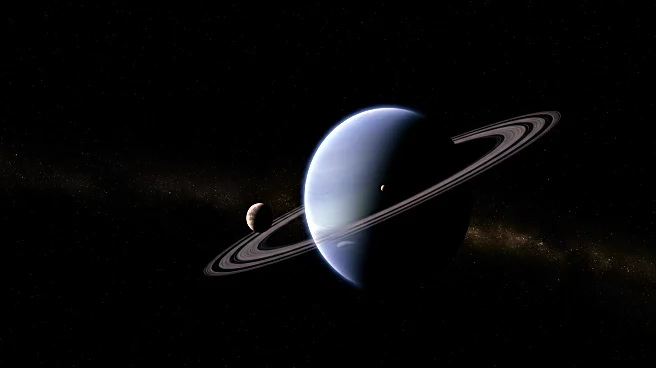What is the story about?
What's Happening?
The James Webb Space Telescope has identified a previously unknown moon orbiting Uranus, increasing the planet's known moons to 29. This discovery was led by astrophysicist Maryame El Moutamid from the Southwest Research Institute. The newly found moon, tentatively named S/2025 U1, is estimated to be about six miles wide and orbits between the moons Ophelia and Bianca. The discovery was made while investigating Uranus' rings, which have unexplained sharp edges that suggest the presence of small moons. The new moon's nearly circular orbit indicates it may have formed near its current location.
Why It's Important?
This discovery is significant as it enhances the understanding of Uranus' complex ring and moon system. The presence of such a small moon, which escaped detection by Voyager 2 in 1986, suggests that there may be more undiscovered moons around Uranus. These moons could play a crucial role in shaping the planet's rings by gravitationally shepherding dust and debris. The findings also highlight the capabilities of the James Webb Space Telescope in observing faint celestial objects, which could lead to further discoveries in the solar system.
What's Next?
The newly discovered moon, along with another moon found in 2023, awaits official naming by the International Astronomical Union. Further observations are needed to refine the orbits of these moons. The ongoing study of Uranus' moons and rings may provide insights into the planet's formation and evolution. Future missions or long-exposure observations could reveal additional moons, enhancing the understanding of Uranus' gravitational dynamics and its impact on the ring system.
Beyond the Headlines
The discovery of the new moon may have implications for understanding the formation of planetary ring systems and the role of small moons in maintaining ring structures. The study of Uranus' moons could also offer clues about the potential for subsurface oceans on larger moons, which may have implications for astrobiology and the search for life beyond Earth.
AI Generated Content
Do you find this article useful?
